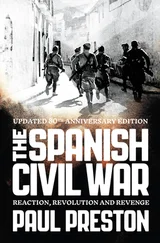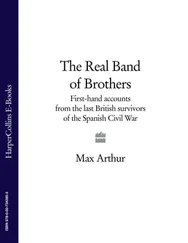The ‘young barbarians’ who supported the Radical Party leader Alejandro Lerroux went wild and others followed, with church burning and forms of desecration such as the famous incident of a worker dancing with a disinterred nun. Such symbolic violence was the reaction of a people traumatized by intense superstition. Much of the teaching of the Spanish Catholic Church sounded appropriate to the Dark Ages and this mental repression, together with the political role played by ecclesiastical authorities, made the Church rank with the civil guard as the first target of an uprising. Some half a dozen people were killed during this disturbance, but when the army arrived to restore order there was a massacre.
Hundreds were arrested including Francisco Ferrer, the founder of the libertarian Modern School. Although it was evident that Ferrer could have had nothing to do with the rioting, the Catholic hierarchy put heavy pressure on the government to convict their educational opponent. He was sentenced to death on the basis of obviously false testimony and his execution led to a wave of protest in Spain and abroad.
After the Barcelona upheaval of 1909 a majority in the libertarian movement evolved a fresh strategy. This new direction was mainly influenced by the French syndicalist movement, with a union-based policy, the ultimate objective of which was a general strike followed by the reorganization of society based on self-managed industry and agriculture. This led to the setting up of the anarcho-syndicalist National Confederation of Labour (CNT), whose component unions were to be organized by industry, not by craft. The Spanish libertarian movement thus consisted basically of anarchist purists and anarcho-syndicalists.
During the First World War, while industrialists profited enormously, their workers suffered from high inflation–prices doubled between 1913 and 1918–yet salaries increased by only 25 per cent. 2Union membership rose dramatically as a result. The UGT increased to 160,000 members, while the anarcho-syndicalist CNT swelled to some 700,000 by the end of 1919. The socialist party itself, the PSOE, soon counted on 42,000 activists. Its leading members included Francisco Largo Caballero, Indalecio Prieto, Fernando de los Ríos and Julián Besteiro, all of whom would be major figures in the years to come. Meanwhile the very moderate Catholic union movement, Confederación Nacional Católica Agraria (CONCA), grew mainly in the agrarian heartlands of Castile and León. Its only hope in industrial centres was in the devout Basque country. 3
In Spain, the entrenched position of the military establishment proved a major obstacle to gradual reform. The Spanish army was 160,000 strong, commanded by 12,000 officers and 213 generals. 4This overmanned and incompetent organization was a heavy charge on the state. Its role was never clear. Although basically reactionary, at times it saw itself as an ally of the people against corrupt politicians and a force for national regeneration. Reduced after the loss of empire to an existence of provincial garrisons, its only active area of operations lay in the Spanish protectorate of Morocco, a far smaller area than that accorded to France in 1906 at the Conference of Algeciras. The only economic interest in the territory lay in its phosphate mines, while the local Kabyle population longed to rid themselves of European rule. For Spanish officers keen on promotion, service in Morocco promised real soldiering far from the boredom of barrack life at home. An ‘ africanista’ mystique developed, making them the elite of the Spanish armed forces and giving them a sense of destiny as well as arrogance.
In 1917 a military and political crisis developed in Spain. Associations known as Juntas de Defensa had grown up in the forces to demand better conditions, but when the government tried to abolish them their leaders published a manifesto attacking the lamentable state of the army. Afraid of a pronunciamiento , the conservative administration of Eduardo Dato conceded to some of their demands. But this encouraged in some politicians, above all Francesc Cambó, the leader of the Lliga Catalana, the idea that they could use the opportunity to force through constitutional reforms. They hoped that this would modernize the country and introduce real democracy. Cambó called for an assembly of politicians on 19 July in Barcelona as a step towards a constituent Cortes, a fully representative parliament.
At the same time the socialist PSOE and the UGT, under similar illusions, also imagined that the juntas offered a chance of change. They called a general strike to support their own demands for a constituent Cortes. Dato closed parliament and suspended constitutional guarantees. The strike began on 13 August in Madrid, Barcelona, Bilbao, Saragossa, Oviedo and the mining regions of the Asturias and Andalucia. But the Juntas de Defensa not only refused to join the revolution, their members took part in crushing the strikes, leaving 72 dead, 156 wounded and 2,000 arrested. In Asturias, where the strike lasted a month, General Ricardo Burguete and a young africanista major called Francisco Franco were in charge of the repression which included torture. It was a foretaste of a far more serious upheaval in 1934, in which General Franco was to play a leading role. While the socialist leaders were condemned to life imprisonment in Cartagena, nothing happened to Cambó.
Repression alone was no solution to the social problems which increased with the end of the First World War. The population was growing, largely due to a fall in infant mortality, and the cities swelled, with internal migration from the more impoverished areas of the countryside as men and women sought work at a time of rising unemployment. The Church no longer was able to control the population as it had, yet the politicians of the day refused to accept the possibility of change. They did not know, or did not want to consider, how to move ‘from an oligarchic liberalism to mass democracy’. 5Comparatively little had changed in attitude since Ferdinand VII, a century before, had described Spain as a bottle of champagne and himself as the cork to prevent it gushing over.
When the First World War ended and the export boom slackened, the workers became more militant. Also, the news from Russia brought hope to the left. There was talk of Europe blazing with revolution at both ends. The period of 1918–20, with uprisings in Andalucia and strife in Barcelona, was known as the ‘three years of bolshevism’. The worst wave of unrest started when the anarcho-syndicalist CNT brought the workers of La Canadiense out on strike. 6The Catalan employers replied with lockouts and resorted to blackleg labour from depressed areas. In answer to the violence from the unions, especially the CNT, they hired pistoleros to shoot down union leaders. To restore order Alfonso XIII appointed General Severiano Martínez Anido as civil governor. His chief of police, General Arleguí, reorganized the police pistoleros and 21 union leaders were shot down either at home or in the street in less than 48 hours. The cycle of bitterness was such that it later led to the assassination by anarchists of Eduardo Dato in 1921. 7
The radicalization of the CNT clashed with the moderate stance of the socialist UGT. The anarchosyndicalists saw the socialists as reformists, if not traitors to the working class. The Spanish Communist Party was founded in 1921, with both militant socialists and anarchists responding to the call of Andreu Nin and Joaquín Maurín. This third, although still minute, force was to take part in the struggle for leadership of the industrial working class. Meanwhile, in the countryside the day workers in Andalucia continued their own long jacquerie of doomed uprisings. The strikes of rural labourers followed each other at a rapid rhythm. The Civil Guard would be called out, and the trouble suppressed by shootings and arrests. The protests spread from Córdoba to Jaén, Seville and Cádiz, with demands for better conditions and the recognition of rural trade unions. But encouraged by news from the other end of Europe, they adopted slogans such as ‘ ¡Vivan los soviets!’ , which they daubed on whitewashed walls, confirming landowners in their suspicion that if they weakened, they could face the same terrible fate as Russian landowners. 8Even the politicians in Madrid recognized that some form of land reform programme needed to be implemented urgently, but few governments remained in place long enough to tackle the problem. 9
Читать дальше












